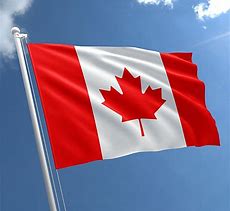Celebrating Canada’s Forestry Identity
Celebrating Canada’s Forestry Identity
Canada day weekend is usually marked with fireworks, parades, backyard barbecues, and generally time spent with family and friends. But historically Canada day, or it’s predecessor Dominion Day, provided an opportunity for communities to express their visions of Canadian identity, and the place of their community within the country. Newspaper editorials published on July 1st often spoke about the country’s history, its place in the world and its prospects for the future.
Forestry has played a large part in shaping our prospects by anchoring our economy and shaping our relationship with the land and the people who inhabit it. And that list is long and varied starting with the original inhabitants from our First Nation communities to early settlers and recent immigrants. So, this Canada day its fitting to pause and look at New Brunswick forestry’s current and future contribution to Canada.
New Brunswick’s forests have been a source of rich natural resource since early settlement, supplying great pine masts for the British navy and later square timbers for export. The industry has evolved with changes in product demand, from rough hew timbers at the turn of the 19th century to today’s precision building products that allow us to build impressive structures once only attainable with non-renewable steel and concrete. Now we face less demand for newsprint but have transitioned to more specialty pulp, paper and packaging. Our forest management has evolved as well to meet demands for ecosystem services like habitat conservation, watershed protection and biodiversity. Forestry’s role in mitigating climate change impacts, including recently identified serious public health concerns, can be attributed to the evolution of forest management in addressing the need to renew forests. One area of interest is the value of planted and naturally regenerated forests to absorb CO2. In fact, a mature tree can absorb about one tonne of carbon in its lifetime and if that product is harvested and converted into a forestry product like lumber or other building material it can lock up that tonne of carbon for generations. And as our country moves to reduce single use plastics our forest sector will be called upon to bring forward solutions to replace these consumer products with sustainable options derived from wood. But this reliance on forestry to deliver sustainable solutions to climate change issues while maintaining a competitive industry requires acknowledgement that our current forest management model is in general the best path forward.
Critics will purport that wide scale community-based management is the best solution or that harvesting schemes that heavily favor only selective cutting regardless of the forest stand composition is the answer, but this is not only ecologically unfounded but economically untenable. In fact, many alternate management schemes would result in driving what is a well regulated and responsible industry to competing countries where no such concern for environmental effects exist.
As our country evolves so does our industry. We have reduced our carbon footprint by nearly 60% since 1990 and continue to support climate action plans like the one proposed by the government of New Brunswick to reduce Green house gas emissions. We are seeking ways to address long term goals of improving the protection of water resources by consulting with regulators to make reasonable and achievable modernization of effluent treatment from our pulping mills. We are constantly improving growth and yield of trees of commercial interest in order to minimize our footprint on the forest landscape allowing for other non-timber objectives to be realized.
Globally we are world leaders in sustainable forest management with nearly 40% of the worlds certified sustainable forests located right here in Canada; 100% on New Brunswick Crown forest, and to think that much of our country’s respected forest management started right here in New Brunswick. It’s a gift befitting a country like ours.
Happy Canada Day.
Mike Légère,
Executive Director

